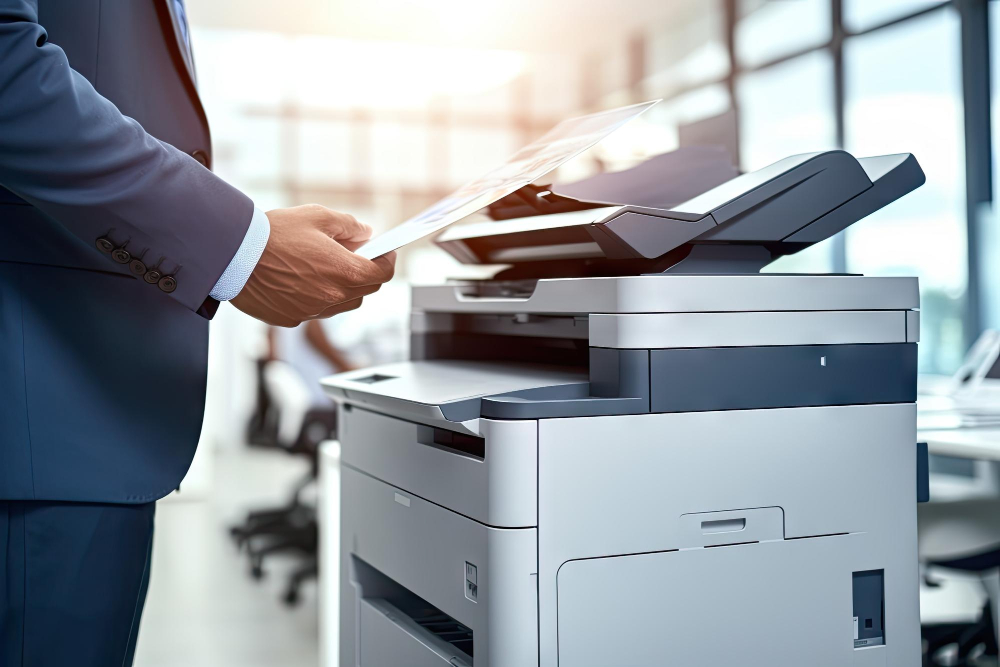A slow printer can disrupt your workflow and increase frustration, especially when you’re under time pressure. Optimizing printer performance can save you valuable time and ensure efficiency. This guide will help you troubleshoot common causes of slow printing and provide actionable tips to improve your printer’s performance.
Common Reasons for Slow Printing
Before resolving the issue, it’s important to identify why your printer might be slow:
- Outdated Drivers: Old or incompatible drivers can reduce printer efficiency.
- High-Resolution Settings: Printing at maximum resolution takes more time.
- Large Print Jobs: Complex documents or large image files can slow down processing.
- Connectivity Issues: Weak Wi-Fi signals or unstable cables may cause delays.
- Hardware Limitations: An older printer may struggle with modern printing demands.
- Spooler Errors: Issues with the print spooler service can bottleneck printing tasks.
Step-by-Step Guide to Speed Up Slow Printing
1. Optimize Print Quality Settings
High-resolution printing produces detailed outputs but takes longer. Adjusting these settings can significantly speed up printing:
- Open your printer’s settings from Control Panel > Devices and Printers.
- Right-click your printer and select Printing Preferences.
- Reduce the resolution by choosing Draft Mode or a lower DPI (dots per inch).
- Save the settings and test the print speed.
2. Update Printer Drivers
Outdated drivers are a common culprit behind slow printing. Update them as follows:
- Press Win + X and select Device Manager.
- Locate your printer under Print queues or Printers.
- Right-click and choose Update driver.
- Select Search automatically for drivers, or visit the manufacturer’s website to download the latest version.
3. Manage Print Spooler
The print spooler queues print jobs for processing. Clearing and restarting it can resolve slow printing:
- Press Win + R, type
services.msc, and press Enter. - Find Print Spooler, right-click, and select Stop.
- Navigate to
C:\Windows\System32\spool\PRINTERSand delete the files in this folder. - Return to the Services window, right-click Print Spooler, and select Start.
4. Use a Wired Connection
Wireless printing can be slower, especially if your network connection is unstable. Switching to a wired connection can improve speed:
- Use a USB cable to connect the printer directly to your computer.
- For network printers, ensure the Ethernet connection is secure.
5. Reduce the File Size
Large files with complex images or embedded fonts can slow down printing. Simplify the file by:
- Compressing images to a lower resolution.
- Converting documents to PDF format before printing.
- Removing unnecessary graphics or heavy design elements.
6. Enable Printer Memory Optimization
Modern printers come with built-in memory to handle larger print jobs. If your printer is struggling, consider:
- Checking your printer’s manual for memory settings.
- Upgrading printer memory if your model allows it.
7. Avoid Printing Overloaded Web Pages
Printing directly from web pages often results in delays due to ads, scripts, or unoptimized layouts. Instead:
- Copy the content to a Word document and format it for printing.
- Use the browser’s Reader Mode to simplify the page before printing.
8. Keep Your Printer Firmware Updated
Firmware updates often include performance improvements and bug fixes:
- Visit your printer manufacturer’s website.
- Search for your printer model and download the latest firmware.
- Follow the instructions to install it.
9. Clean and Maintain Your Printer
A poorly maintained printer can perform sluggishly:
- Clean the printer head and rollers to ensure smooth paper feeding.
- Check for paper jams or debris inside the printer.
- Use high-quality paper to reduce friction and misfeeds.
10. Enable Print Spooling
Print spooling allows your computer to process documents in the background:
- Open Control Panel > Devices and Printers.
- Right-click your printer and select Printer Properties.
- Go to the Advanced tab and select Spool print documents so the program finishes printing faster.
- Save the settings.
11. Use Compatible Cartridges and Toners
Non-compatible or low-quality cartridges can slow down the printing process. Ensure you’re using cartridges approved by the printer manufacturer.
12. Upgrade Your Printer
If your printer is consistently slow despite troubleshooting, it might be time for an upgrade:
- Look for a printer designed for high-speed printing, such as laser printers.
- Choose a model with advanced features like duplex printing and large paper trays.
Tips to Prevent Slow Printing Issues
- Regular Updates: Keep your drivers and firmware updated.
- Network Stability: Ensure a strong Wi-Fi connection or use Ethernet for reliable performance.
- Routine Maintenance: Clean the printer and replace worn-out parts regularly.
- Use Simple Layouts: Avoid unnecessary design elements in your documents.
- Monitor Paper Quality: Always use compatible and high-quality paper.
Why Printer Performance Matters
Optimizing printer performance is essential for:
- Productivity: Faster printing ensures timely delivery of tasks.
- Cost-Efficiency: Avoid wasted time and resources on repeated or delayed printing.
- Energy Savings: Efficient printing reduces energy consumption.
Conclusion
Slow printing can be a significant hindrance, but with the right strategies, you can enhance your printer’s speed and performance. From adjusting print quality settings and updating drivers to maintaining your printer, these steps will help you tackle common printing challenges. Staying proactive with maintenance and updates ensures smooth printing for years to come.







